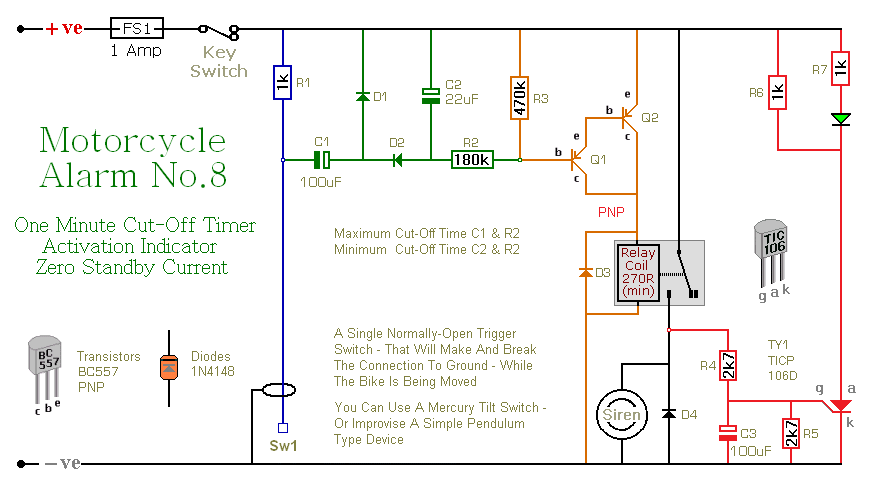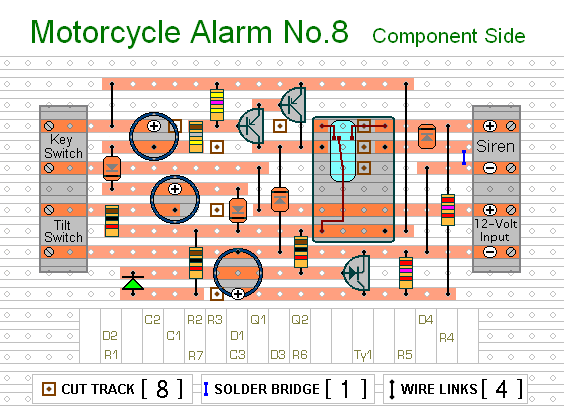This is a simple motorcycle alarm - with a time limit on the siren. While the thief continues to move the bike - and the normally-open trigger switch continues to open and close - the siren will continue to sound. When the bike stops moving - the siren will cut-off.
If Sw1 is open when the thief abandons the bike - the siren will shut off after about ten seconds. If the switch is closed when the bike is abandoned - the siren will turn off after about a minute. Any subsequent movement will re-activate the alarm.
Schematic Diagram
Click Here For A Photograph Of The Prototype.

Notes
Sw1 is a single trigger switch that makes and breaks the connection between R1 and ground. You can use a "tilt" switch that will open and close when say the steering is moved - or when the bike is lifted off its side stand. But it should be possible to improvise some sort of simple pendulum device that would be more responsive to other types of movement - and so offer improved protection.
The circuit is designed to use an electronic Siren drawing less than about 500mA. It's not usually a good idea to use the bike's own horn - because it can be easily located and disconnected. However - if you choose to use the horn - remember that the alarm relay is too small to carry the necessary current. Connect the coil of a suitably rated relay to the "Siren" output - and use its contacts to sound the horn.
The circuit board and switches must be protected from the elements. Dampness or condensation will cause malfunction. Connect a 1-amp in-line fuse AS CLOSE AS POSSIBLE to your power source. This is VERY IMPORTANT. The fuse is there to protect the wiring - not the alarm. Exactly how the alarm is fitted will depend on the make of your particular machine - so I'm unable to provide any further help or advice in this regard.
The components are all drawn lying flat on the board - but those connected between close or adjacent tracks are mounted standing upright. The links are bare copper wire on the component side. The
Support Material for this circuit includes a detailed circuit description, a circuit simulation, a parts list, a step-by-step guide to construction and details of
How To Test Your Finished Alarm .
Veroboard Layout
Click Here For A Photograph Of The Prototype.

Motorcycle Alarm No.8 - Circuit Simulation